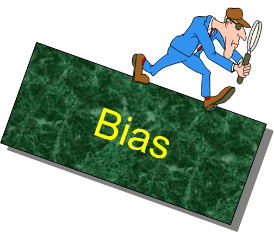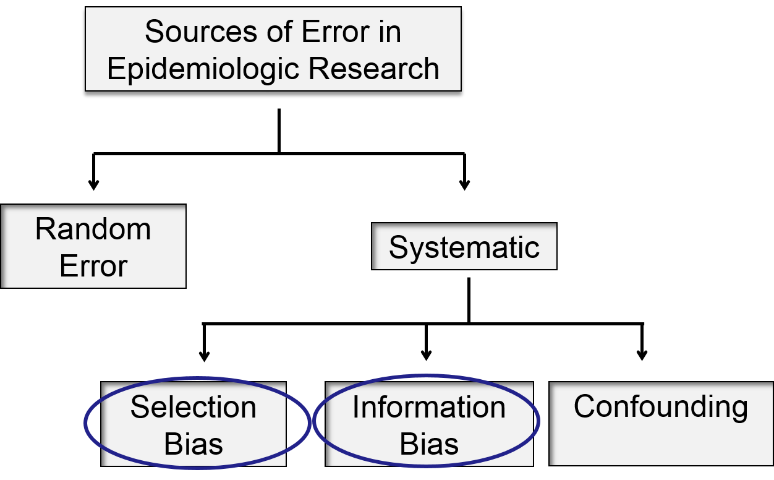Introduction

We have already alluded to sources of error in epidemiologic studies, and you have learned a number of methods for evaluating random error. We will now turn our attention to biases, i.e., systematic errors that are usually unwittingly introduced into a study by the investigators or the subjects that cause an over- or under-estimate of an association between an exposure and a health outcome.

In this module we will focus on selection bias and information bias.
- Selection bias occurs when the participants selected into a study or who happen to be retained during a longitudinal study are not representative of the source population, because their selection or retention was related to their exposure-disease status.
- Information bias occurs if there are errors in classifying participants with regard to their exposure status or their outcome status.
By identifying common mechanisms of bias, we can design studies to limit these pitfalls, predict the impact of bias on our study results, and critically evaluate the published literature.
Essential Questions:
- What systematic errors in population health research can lead to incorrect conclusions?
- Why do these errors occur? Are they specific to certain study designs?
- What is selection bias and information bias?
- How can we estimate the effect of bias on my findings? How can we avoid or minimize these errors?
Learning Objectives
After completing this module, you will be able to:
- Define bias (systematic error) and differentiate between random error and systematic error
- Describe selection bias and identify why and how it occurs in different study designs
- Describe ways to minimize the effect of selection bias
- Define information bias and identify why and how it occurs
- Determine whether a particular bias in a given study would result in an overestimate or an underestimate of the strength of association, i.e., whether the bias is toward the nul or away from the null.
- Evaluate data to determine whether bias is likely to have occurred in a given study
- Identify which types of studies are prone to particular types of bias
- Identify common sources of bias and strategies to prevent selection and information bias


